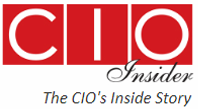
DoT Amends Licenses Enabling Machine-to-Machine Communication

The Department of Telecommunications (DoT) amended telecom licenses to allow service providers to roll out machine-to-machine communication in the country, a service that is seen as a crucial driver of 5G adoption.
The DoT has included M2M with a pan-India permit that is limited to circle and district levels in the license revision.
Although the DoT announced M2M guidelines in May 2018, the provisioning condition was not included in the telecom licenses.
An entry fee of Rs 30 lakh, a performance bank guarantee (PBG) of Rs 40 lakh, and a financial bank guarantee (FBG) of Rs 2 lakh will be required of telecom carriers interested in delivering M2M services across India.
The entry cost for the circle level category is Rs 2 lakh, the PBG category is Rs 2 lakh, and the FBG category is Rs 20,000. For district level, the admission fee, PBG, and FBG will be Rs 20,000, Rs 10,000, and Rs 2,000, respectively.
According to Bharti Airtel, “its previous approaches like the indexation of past prices, avoided cost methods are not relevant due to the changing dynamics of the 5G era. It is no longer enough to augment additional capacity for the same traffic and avoid the cost”
DoT has also included a provision for audiotex or interactive voice response service (IVRS) supply as part of the telecom license.
Meanwhile, the country's three largest mobile providers have requested a 90-95 percent reduction in the base price for the 5G auction in the 3300-3670 band. For pan-Indian spectrum in this band, the regulator had previously recommended a price of Rs 492 crore per MHZ.
Telecom companies have protested that this figure was far too costly, implying that 5G services would be unviable.
Per Mhz basis, the pricing for the mmWave band (24.25 GHz to 28.5 GHz) should not exceed one percent of the pricing for the 3,300-3,670 Mhz band.
In its submission, Reliance Jio stated that the reserve price for mid-band spectrum should be reduced by around 95 percent for a pan-India 100 Mhz block, and that the reserve price for mmWave bands should be kept at 1/100th of the mid-band, and that the reserve price for spectrum in V-band and E-band should be kept at 50 percent of mmWave, taking into account India's low ARPU (average revenue per user), purchasing power, and international benchmarks Bharti Airtel has also stated that spectrum prices should be modest at best, and should not exceed 10 percent of the pricing recommended earlier this year.
The operators have stated that Trai's previous valuation methodology (and assumptions) need to be revisited in light of changing market realities, such as industry health and revenue generation capability.
According to Bharti Airtel, “its previous approaches like the indexation of past prices, avoided cost methods are not relevant due to the changing dynamics of the 5G era. It is no longer enough to augment additional capacity for the same traffic and avoid the cost”.



